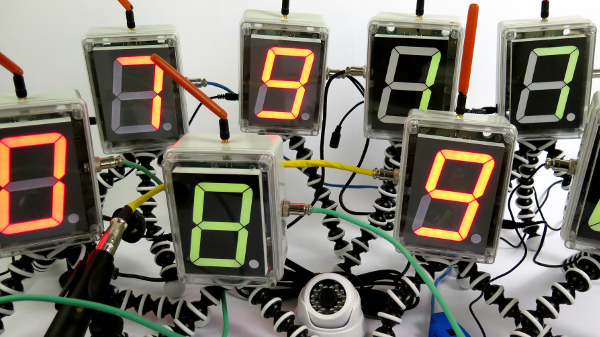
A State of Sin
Anyone who attempts to generate random numbers by deterministic means is, of course, living in a state of sin.
—John von Neumann (1951)
—John von Neumann (1951)
Throughout history, random numbers have been used in gambling, divination, and democracy. They are also essential to modern computation, used in everything from cryptography to scientific research. However, true random numbers cannot be calculated by machines alone. Rather, they must be sampled from the world itself.
This site shares data from a gang of hopeful robots resident in an art gallery. They take readings from the world around them in order to seed true random number generators. Here's how they do it.
| Sensor One | Plant Life (Soil Humidity) | ● | ||
| Sensor Two | Sound (Microphone) | ● | ||
| Sensor Three | Electromagnetic (Induction coil) | ● | ||
| Sensor Four | Light (Camera) | ● | ||
| Sensor Five | Electrical Grid (AC pick-up) | ● | ||
| Sensor Six | Environment (Temperature/Humidity) | ● | ||
| Sensor Seven | Atmosphere (Gases) | ● | ||
| Sensor Eight | Weather (Wind anenometer) | ● |
The robots were first installed in Broken Symmetries at FACT, Liverpool, an exhibition curated by Arts at CERN. The exhibition ran from November 2018 to March 2019. They subsequently visited the exhibition Quantica: In Search of the Invisible at CCCB, Barcelona, from April until November 2019, and iMAL in Brussels, from 3rd May until 30th June 2020, as well as the National Museum of Fine Arts in Taiwan and Le Lieu Unique in Nantes, France, and finally KUMU Art Museum in Talinn, Estonia, from 30th October 2020 until 21st February 2021.
Collections of random numbers from these installations will be made available periodically.
(Check out more photos of the robots)
Doing theory requires being open to the world’s aliveness, allowing oneself to be lured by curiosity, surprise, and wonder. Theories are not mere metaphysical pronouncements on the world from some presumed position of exteriority. Theories are living and breathing reconfigurings of the world. The world theorizes as well as experiments with itself. Figuring, reconfiguring. Animate and (so-called) inanimate creatures do not merely embody mathematical theories; they do mathematics. But life, whether organic or inorganic, animate or inanimate, is not an unfolding algorithm. Electrons, molecules, brittlestars, jellyfish, coral reefs, dogs, rocks, icebergs, plants, asteroids, snowflakes, and bees stray from all calculable paths, making leaps here and there, or rather, making here and there from leaps, shifting familiarly patterned practices, testing the waters of what might yet be/have been/could still have been, doing thought experiments with their very being. Thought experiments are material matters.
—Karen Barad, On Touching (2012)
© James Bridle 2018